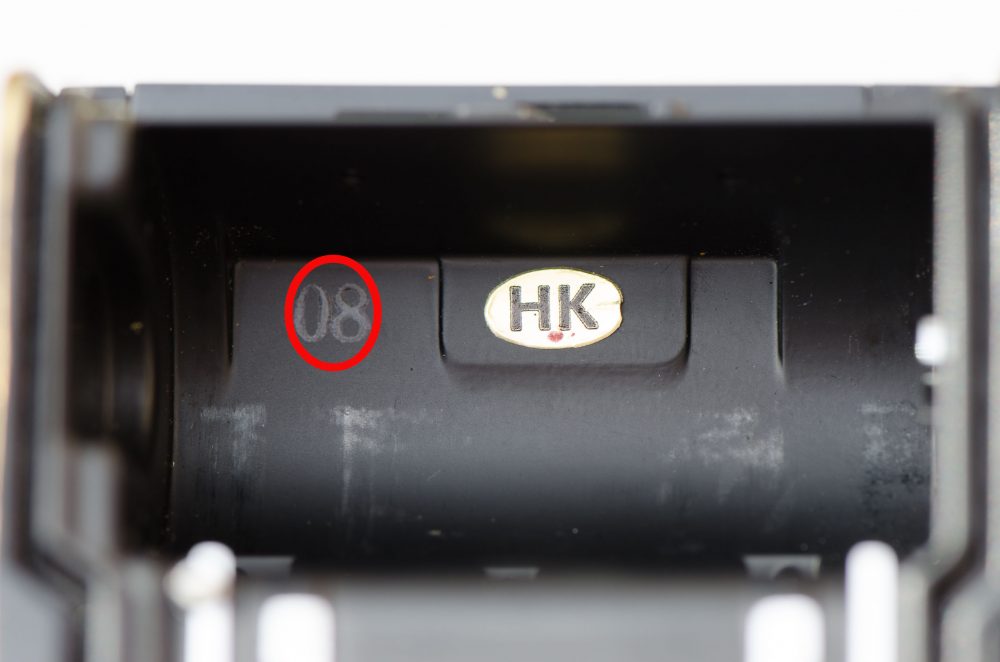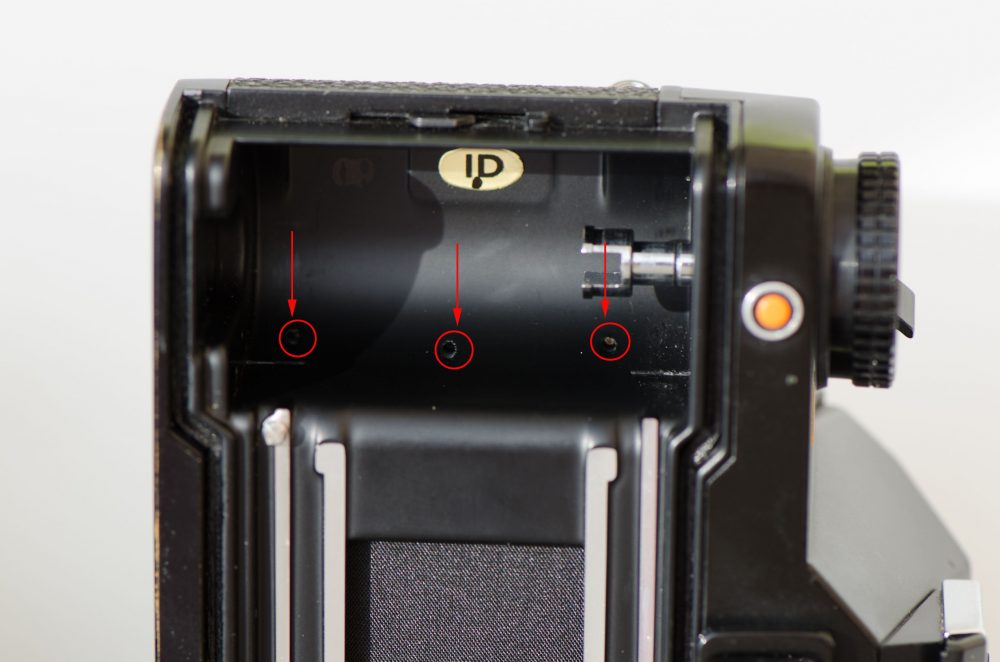
The Mamiya NC1000s — the first camera in my collection
The Mamiya NC1000s (black) was my first SLR camera ever. I must have been around 14 years old and did know only very little about photography though I was a passionate user of a Polaroid instant camera and, according to my parents, wasted all my money on the super expensive film cartridges as well as the 1-time flash bulbs for “meaningless” shots which of course were not for me.
The NC1000s was a present from my grandfather, I believe for either my birthday or Christmas, and it came along with an Agfa Agfatronic flashlight, the body case and a 50 mm/f1,7.

With this equipment, I had everything I needed to start my new adventure with 35 mm film and I soon figured out that there was a difference in the picture when setting it to f16 or f1,7, thanks to the aperture stop down lever on this camera. The term “depth of field” was then explained patiently by my father, who himself was a proud owner of a Konica Autoreflex T which I was not allowed to even come close to for satisfying my never-ending curiosity of this gorgeous apparatus. (eventually, I did inherit this camera and collected a few more of the Autoreflex models, but that is another story)
At my local school, our class teacher, Mr. Bachmann was another source of learning and inspiration and soon enough, we were told to bring along our camera for a little competition of taking the best “picture” during a school trip to the glacier of Aletsch in the lovely canton (county) of Wallis in Switzerland (where the famous Matterhorn can be found too). To my surprise, I won the first price and my picture was very prominently attached to a wall in our class-room. I remember that I took special care of the composition and instead of most of the others, I decided to frame the Alps’ largest glacier within trees, which resulted in a more balanced overall composition (IMHO) than just showing the glacier standalone. Of course, the 50 mm were therefore “helping” as I would have had to be much closer to the subject than others with their zoom lenses.
The below copy is a flatbed scan from a photo album and due to the long last exposure to light in the classroom, the colors have faded a lot and I have not yet found the color negative. With Lightroom, I have tried to correct the colors as from my memory.

Features
I just love this small and light-weight camera, especially together with the provided 50 mm lenses. It has a sturdy die-cast chassis, a plastic top and a brass bottom plate, light meter with aperture priority-mode and like the Olympus OM-x, the speed setting is on the lens bayonet and not on the top. A neat feature is the power-off function for the light-meter combined with a shutter lock, when depressing the center of the advance lever. When set to ON, an orange ring is visible. When pressing, a spring mechanic retracts the lever. As of today, I have never seen such implementation on any other camera.


This is the exploded view of the mechanic.

The parts of the Mamiya NC-1000s







Technical details
- Camera Type: Ultra compact, shutter speed priority AE (Automatic Exposure) 35 mm SLR with manual override.
- Film and Negative Size: 35 mm film, 24 mm x 36 mm
- Standard Lenses: Auto Mamiya-Sekor CS Multi-Coated 50 mm f/1.4 and Auto Mamiya-Sekor CS Multi-Coated 50 mm f/1.7
- Lens Mount: Mamiya Bayonet (three-flange, 49 mm diameter) Mount.
- Shutter: Electronically controlled rubberized silk focal plane shutter with range of 1/1000 – 1 sec. B (bnlv).
- Self-Timer: Variable time delay of about 4-9 sec.: has its own Activating Button and can be bypassed.
- Sync Terminals: FP, X, and a Hot-Shoe for cordless flash operation.
- Exposure Meter: Ultra sensitive center-weighted CdS meter with exposure measurement-range of EV 2-18 (100 ASA, f/1.4 lens).
- Coupling: With Mamiya-Sekor CS lenses in AE mode: ASA, shutter speed, and lens maximum aperture. With Mamiya-Sekor CS lenses in manual mode: ASA, shutter speed, and lens maximum aperture. Working aperture is directly read from viewfinder Aperture Scale and manually set. With present lenses: ASA and shutter speed. Exposure measurement is by zero-method stop-down metering.
- Film Speed Range: ASA, 25-3200; DIN 15-36.
- Viewfinder: Large, brilliant pentaprism SLR viewing. Exposure Meter Indicator Needle, Aperture Scale, — and Stop-Down Metering Index Mark visible in viewfinder. Magnification of 0.9^+X with 50 mm lens at infinity.
- Film Advance Lever: Single-action type with short 130° throw and stand-off angle of 15°, double-exposure prevention, and with Meter OFF Button incorporated into lever (Meter OFF Button also doubles as Shutter Release Button Lock).
- Power Source: Two 1.5V silver oxide batteries (Eveready S-T6, Ray-O-Vac RS-76, Mallory MS-76 or equivalent) supply the power for the electronic shutter and exposure meter.
P. ID or the attempt of explaining subtle differences between NC1000(s) cameras
In his article about the NC1000s, Roland Stauber highlights a difference in the armature of the shutter control when comparing several of the same cameras. He reflects that the change has been introduced at a specific moment in the life cycle of the camera, somewhere between serial numbers starting with K14 and K16.
In the Mamiya NC1000 service/repair manual #90217 from photobooksonline.com, the specific change is described in a bulletin from 3rd of August 78 as “New Armature for camera Model NC1000 to NC1000s” and amongst others, reference is made to “P. ID:08” which awoke my curiosity so checking the service manual I found the explanation of P. ID:
Bell & Howell’s General Service Bulletin from 29th of May 1978 explains the introduction of Part Identification numbers.
Reference: Service Manual MM NC1000 for Model NC-1000 camera, Mamiya technical Bulletin #078-NC1000-1 MARCH ’78
A new series of part identification number (P. ID) will be applied on the NC1000 or the NC1000s to make the changes of components or parts of each camera clear. The P. ID will be stamped on the camera body as shown in the drawing below and will coincide with the Mamiya Technical Bulletin number.

Example: A “03” stamped on the body means that the modifications of bulletins # ’S 087-NC1000-1, -2 and -3 have been applied on that particular camera body.
In the case of the initially mentioned P. ID:08, the purpose of the modification was to establish a “more reliable alignment of the magnetic yoke and armature” and further, the “new assembly … can be used in old bodies” which could mean that even cameras with a lower serial number can have the modification, hence relying on serial numbers only, might not be revealed the full potential of the camera with modifications.
I list below the changes I am aware of, but there are most certainly further modifications that happened after the print of the service manual.
- P. ID 02: Purpose of the modification: to make more secure operation of the pawl
- P. ID 02: Purpose of the modification: to make more secure lock to prevent double film transport
- P. ID 03: Lens lock lever CSL23441 has been modified for secure perfect locking
- P. ID 03: Purpose of the modification: protection from shock
- P. ID 03: Purpose of the modification: two protrusion is from stopper of CSL1691T1 lever in place of PD2x8BNi screw
- P. ID 04: Start lever has been modified for prevention of deviating from lever CSL2151T1
- P. ID 04: Purpose of the modification: More easy and secure soldering (on printed circuit board)
- P. ID 05: Purpose of the modification: Smooth film transport
- P. ID 05: Newly strengthened plastic / fiberglass top cover for camera models NC-1000 or NC-1000s
- P. ID 05: Parts modification for accessory shoe for top cover assembly for camera models NC-1000 and NC-1000s
- P. ID 05: Parts modification to accommodate the newly revised top cover for camera models NC-1000 and NC-1000s
- P. ID 06: Purpose of the modification: To prevent looseness of the screws
- P. ID 06: Purpose of the modification: Making more smooth film transport. Teeth from the rack plate assay. Have been modified
- P. ID 07: Purpose of the modification: To fix the linking arm firmly
- P. ID 08: New armature for the camera model NC1000 to NC1000s
- P. ID 08: Printed circuit board modification for camera model NC1000
- P. ID 08: New film guide pin for camera models NC1000S & NC1000
- P. ID 08: Shorter screw for self-timer on camera models NC1000S & NC1000
I have a camera with P. ID 08 and 09 and there are some subtle differences in the film chamber as you can see in the pictures below. I assume that P. ID 09 also included some further improvements, so if anyone has more information, let me know.




 Looking at the two cameras with the bottom plate taken off, the mechanics are the same and there’s just a difference with a switch as shown on the picture below.
Looking at the two cameras with the bottom plate taken off, the mechanics are the same and there’s just a difference with a switch as shown on the picture below.

Part 2 will be about the lenses and my continued story of exploring photography with the NC1000s.